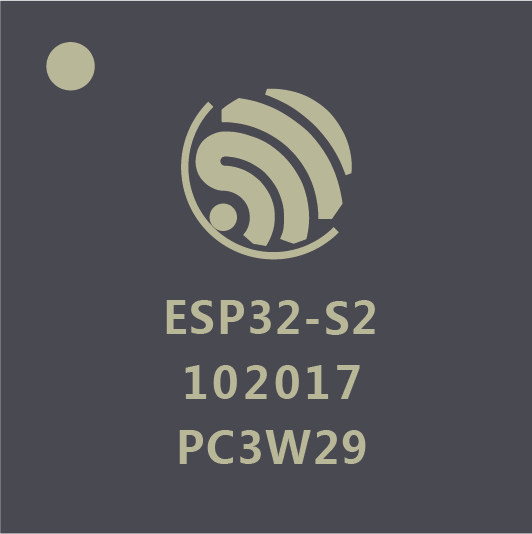 Espressif Systems has unveiled a new ESP32 WiFi MCU based on Cadence (previously Tensilica) Xtensa LX7 core instead of the usual Xtensa LX6 core(s). ESP32-S2 is powered by a single Xtensa LX7 core clocked at 240 MHz, supports Wi-Fi HT40 @ 2.4 GHz, and provides up to 43 GPIOs.
Espressif Systems has unveiled a new ESP32 WiFi MCU based on Cadence (previously Tensilica) Xtensa LX7 core instead of the usual Xtensa LX6 core(s). ESP32-S2 is powered by a single Xtensa LX7 core clocked at 240 MHz, supports Wi-Fi HT40 @ 2.4 GHz, and provides up to 43 GPIOs.
Espressif ESP32-S2 specifications:
- CPU – Cadence Xtensa single-core 32-bit LX7 microcontroller @ up to 240 MHz, and ultra-low-power co-processor
- System Memory – 320 kB SRAM, external SPIRAM support up to 128 MB in total, 16 KB RTC memory
- Storage – 128 kB ROM, up to 1 GB of external flash support
- Connectivity
- Wi-Fi 802.11 b/g/n 1×1 transmit and receive with HT40 support with data rate up to 150 Mbps
- Support for TCP/IP networking, ESP-MESH networking, TLS 1.0, 1.1 and 1.2 and other networking protocols over Wi-Fi
- Support Time-of-Flight (TOF) measurements with normal Wi-Fi packets
- I/O & peripherals
- 43x programmable GPIOs
- 14x capacitive touch sensing IOs
- SPI, I2C, I2S, UART, ADC/DAC, and PWM
- LCD (8-bit parallel RGB/8080/6800) interface and also support for 16/24-bit parallel
- Camera interface supports 8 or 16-bit DVP image sensor, with a clock frequency of up to 40 MHz
- Full speed USB OTG support
- Security
- RSA-3072-based trusted application boot
- AES256-XTS-based flash encryption to protect sensitive data at rest
- 4096-bit eFUSE memory with 2048 bits available for application
- Digital signature peripheral for secure storage of private keys and generation of RSA signatures
- Low Power Consumption
- Fine resolution power control through a selection of clock frequency, duty cycle, Wi-Fi operating modes and individual power control of internal components.
- When Wi-Fi is enabled, the chip automatically powers on or off the RF transceiver only when needed
- ULP co-processor with less than 5 uA idle mode and 24 uA at 1% duty-cycle current consumption.
- Improved Wi-Fi-connected and MCU-idle-mode power consumption.
- Package – 7×7 mm QFN package
ESP32-S2 has a larger package and offers more I/O and peripherals options than predecessors including support for RGB LCD displays and a USB OTG interface, but it lacks Bluetooth. I can’t find a clear comparison between Xtensa LX6 and LX7 cores, but you can find more details about the later in LX7 product brief.
ESP32-S2 supports Espressif’s software development framework (ESP-IDF) like their other ESP32 chips. Applications for ESP32-S2 include Smart Home connectivity, battery operated devices, industrial automation, POS machines, and service robots.
The first ESP32-S2 beta engineering samples will be available in June. More details may be found in the press release.

Jean-Luc started CNX Software in 2010 as a part-time endeavor, before quitting his job as a software engineering manager, and starting to write daily news, and reviews full time later in 2011.
Support CNX Software! Donate via cryptocurrencies, become a Patron on Patreon, or purchase goods on Amazon or Aliexpress




